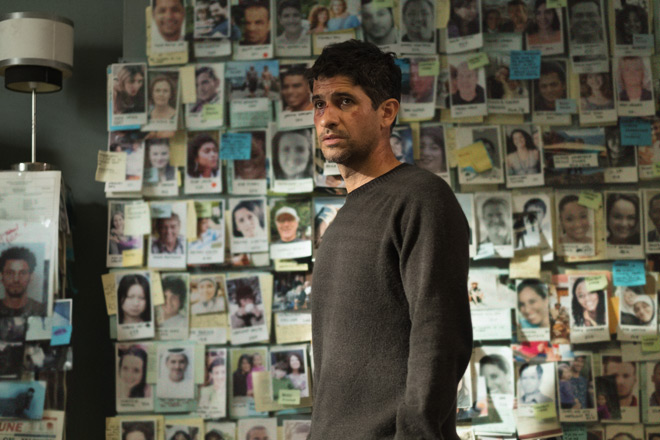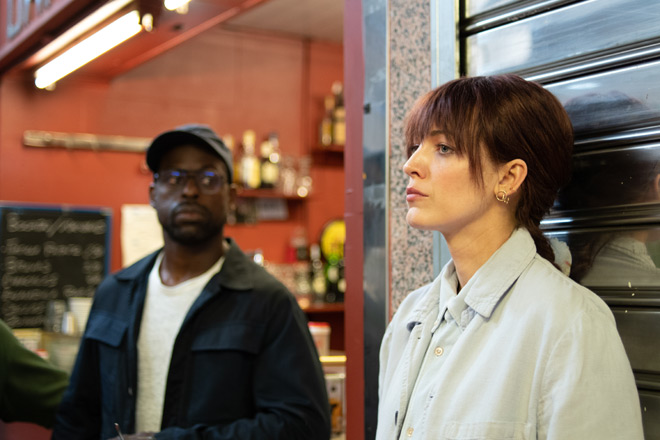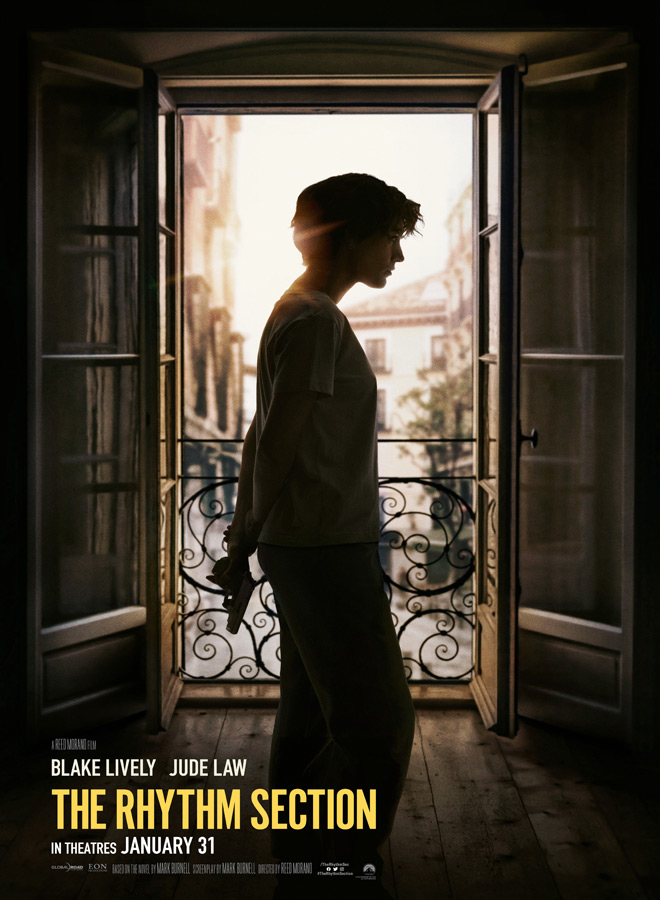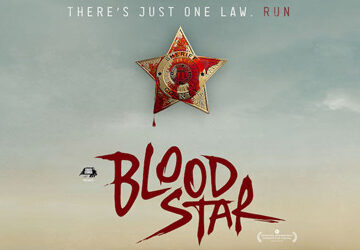Thrillers can be a complicated film genre. Intricate plots, twists, and non-stop action usually keep audiences on the edge of their seats. Most of the time, a slick and sexy hero or heroine drives these Thrillers. The Rhythm Section, starring Blake Lively and directed by Reed Moreno (The Handmaid’s Tale series, The Power series), attempts to change the idea of your typical Action hero with protagonist Stephanie Patrick. Releasing in theaters nationwide on Friday, January 31st via Paramount Pictures, and also starring Jude Law and Sterling K. Brown (The Predator 2017, Black Panther 2018), this film ticks several boxes typical of its genre, but desperately wants to carve out its own space, too.

Based on a best-selling book series by Mark Burnell and adapted for the screen by the author himself, The Rhythm Section follows the story of Stephanie Patrick (Lively: The Town 2010, The Shallows 2016), a former Oxford scholar fallen into destructive vices following the tragic death of her family in a plane crash, as she becomes an unlikely assassin seeking revenge at any cost. After meeting journalist Keith Proctor (Raza Jaffrey: Homeland series, Code Black series), Stephanie learns that her family’s death was not an accident. Proctor’s research leads her into the hands of reclusive former MI6 agent Boyd (Law: Alfie 2004, Sherlock Holmes 2009), who molds her into an assassin set on seeking vengeance on the illusive U17.
Viewers may recognize Eon Productions as the name behind over twenty James Bond films. Famed Producers Barbara Broccoli and Michael G. Wilson lent their talent to this film, and their thumbprints make clearly visible marks in the production. In fact, The Rhythm Section is one of only three non-Bond films the company as ever taken on—a high honor. Thankfully, The Rhythm Section treats women considerably better than your average Bond girl thanks to the keen eye of Moreno. Instead of sleek, practiced kills, the violence in this film feels gritty and real. There is nothing pretty about it.

Where many Thriller heroines are hyper-sexualized and seemingly perfect, Stephanie Patrick is anything but. At the film’s start, we find Stephanie in the grips of a heroin addiction, baggy-eyed and depressed. Thanks to Director Moreno, Stephanie is not cursed by the male gaze, but instead comes across as a realistic, believable, and flawed character. However, as the film progresses and Stephanie suffers through a bleak training montage under Boyd’s dry tutelage, the darker character aspects that may have piqued audiences’ interest are gradually buffed away. What we are left with is a messy, confused character with a better haircut. Lively’s acting truly shines in the the film’s first act, and she definitely has all the makings of a typical leading lady, but the script lacks any real opportunity to make Stephanie a memorable character. It is best not to mention Lively’s phoned-in British accent, though.
The audience is given scraps of Stephanie’s seemingly happy life with her family, and mere hints that she is a scholar skilled in languages, but none of those character points are explored in any meaningful detail. Instead, the story bolts from one locale to another, leaving the story feeling rushed and disjointed. While the final two-thirds of the film seem to fly by at breakneck speed, the first forty-five minutes of the near two-hour runtime drag on. With so little training and only a desire for vengeance driving her on, it is often difficult to believe that Stephanie managed to survive the chases and attacks. Add to this the fact that the odd pacing does not lend itself to the tension or plot twists typical of the genre, meaning The Rhythm Section often fails to stay on beat.

Cinematography and camerawork, courtesy of Sean Bobbitt, are where The Rhythm Section truly shines. Shaky, first-person angles and sweeping wide shots combine to create an immersive experience that puts the audience in Stephanie’s place. Coupled with Steve Mazzaro’s score, the film’s aural and visual experiences bring the story to life when the script droops.
While The Rhythm Section does have a promising premise and presents a strong-willed effort to change what audiences expect from a typical Thriller, the film attempts to play a too-complex tune and misses the most important notes. In trying to do something new, the story falls prey to too many cliches to be memorable. For these reasons, Cryptic Rock gives The Rhythm Section 2.5 out of 5 stars.





